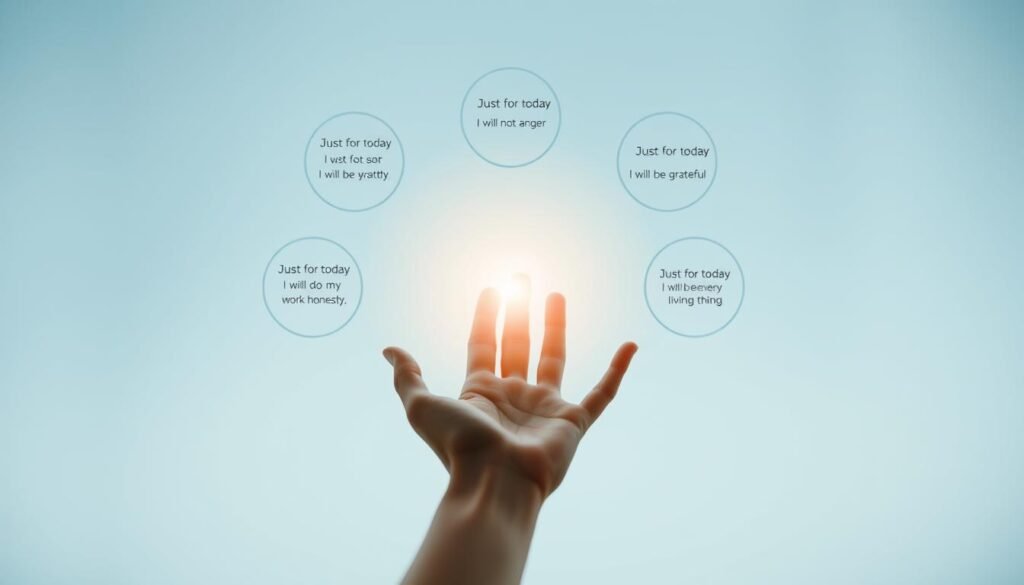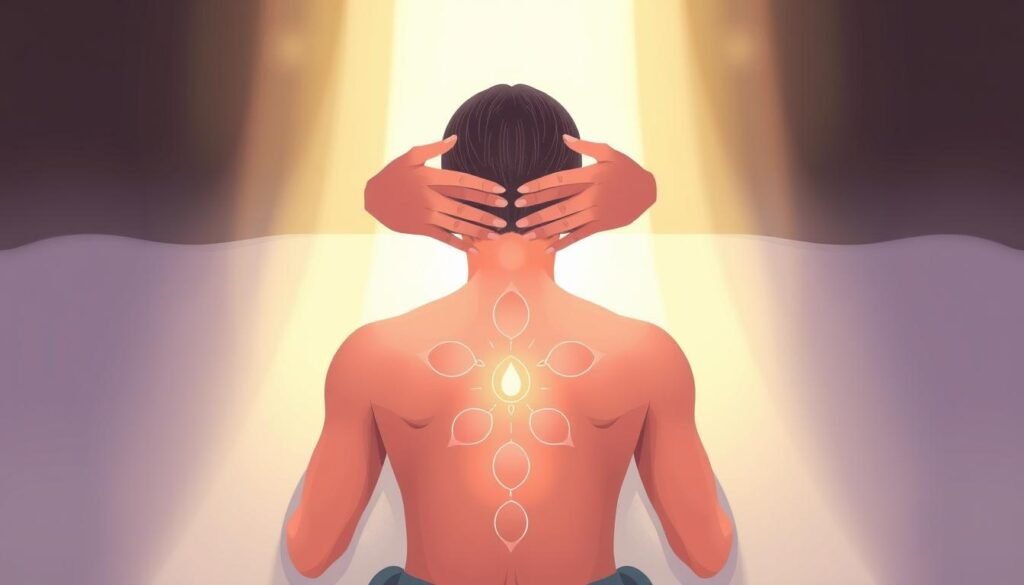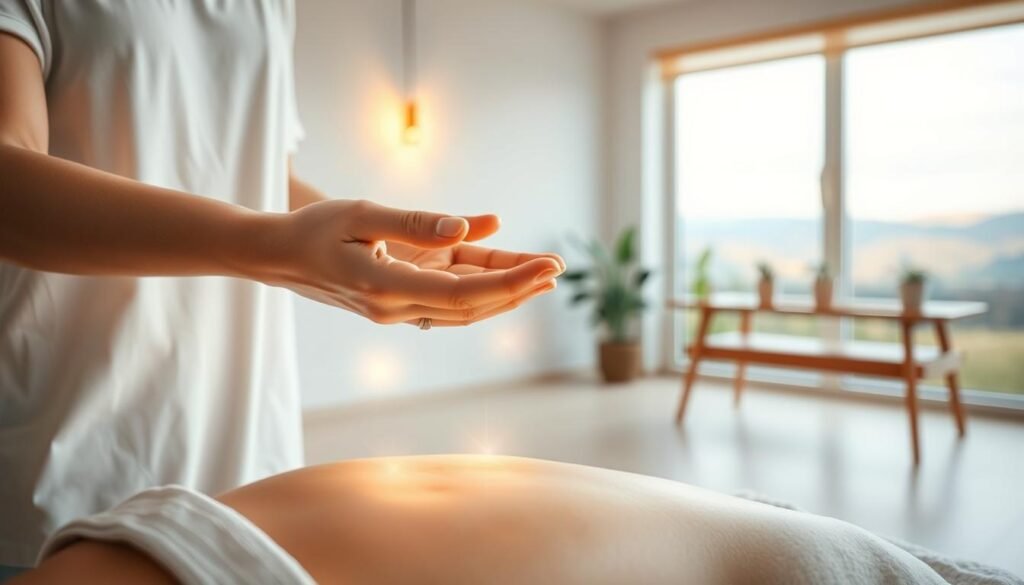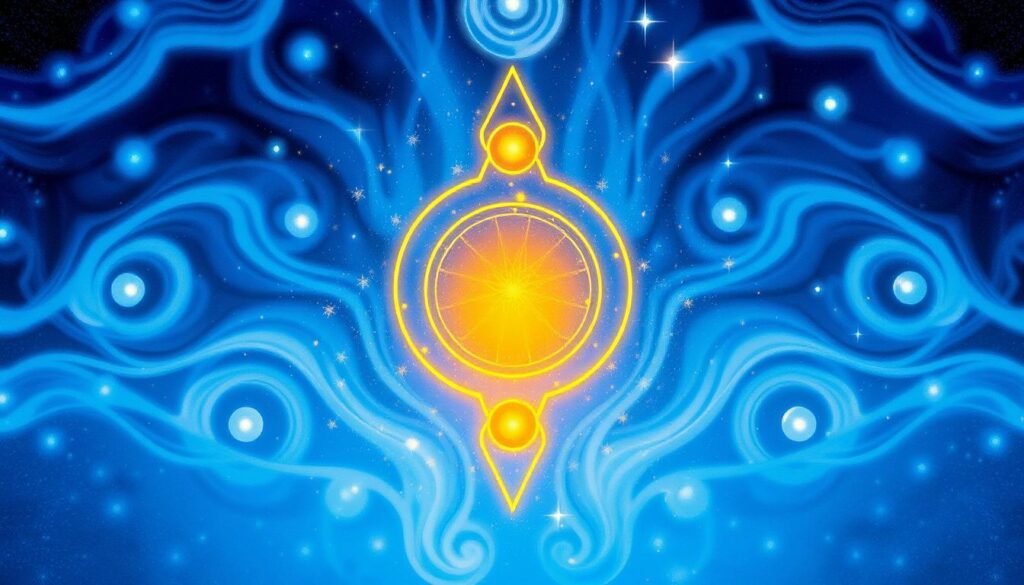Address
AVSSO 2242 SE 171st AVE Portland Oregon USA 97233
Work Hours
Monday to Friday: 7AM - 7PM
Weekend: 10AM - 5PM
Address
AVSSO 2242 SE 171st AVE Portland Oregon USA 97233
Work Hours
Monday to Friday: 7AM - 7PM
Weekend: 10AM - 5PM

Reiki, an ancient Japanese practice, has gained popularity in Western wellness circles as a complementary therapy for physical and emotional wellbeing. It involves a trained practitioner channeling universal life force energy through their hands to the recipient, either through light touch or by hovering hands above the body.
Unlike massage therapy, Reiki doesn’t involve manipulation of muscles or tissues but works with the body’s energy field to promote natural healing processes. As someone who has personally experienced Reiki, I’ll explore its origins, how it works, and its potential benefits according to both practitioners and scientific research.
Understanding Reiki requires a look into its history and the meaning behind the word itself. Reiki, a form of energy healing, has been practiced for approximately 2,500 years, although the modern version was developed in the early 20th century.
The term “Reiki” is derived from two Japanese words: “rei,” meaning universal, and “ki,” referring to life energy. Together, they form a concept that translates to “mysterious atmosphere, miraculous sign.” This energy is believed to be a universal life force that flows through all living things, playing a crucial role in maintaining health and vitality.

Mikao Usui, a Japanese Buddhist, is credited with developing the modern system of Reiki healing in 1922. According to historical accounts, Usui’s profound spiritual experience during a 21-day meditation retreat on Mount Kurama led to the development of Usui Reiki Ryoho, the most current form of Reiki. The practice was later introduced to the Western world in the 1930s by Hawayo Takata, who established the first Reiki clinic in Hawaii and began training American practitioners.
| Aspect | Description | Significance |
|---|---|---|
| Origin | Ancient Japanese practices | Roots in spiritual traditions |
| Modern Development | Mikao Usui in 1922 | Systematized the practice |
| Global Spread | Introduced to the West in the 1930s | Made accessible to people worldwide |
The evolution of Reiki over the centuries, blending ancient wisdom with modern practices, has made it a unique part of holistic healing traditions. By understanding its history and the principles behind it, one can appreciate the depth and significance of Reiki in contemporary healing practices.
At the heart of Reiki lies the belief in a universal life force energy that permeates all living things. This concept is not unique to Reiki; various cultures and healing traditions around the world have recognized the importance of a vital life force.
The concept of “Ki” or life energy is central to Reiki practice, representing the vital force that animates all living beings and flows through the body in specific pathways. According to Reiki philosophy, when this energy becomes blocked or imbalanced due to stress, injury, or negative emotions, it can manifest as physical or emotional ailments. Practitioners believe that by restoring balance to this energy, Reiki can promote healing and overall health.

Similar energy concepts exist across many cultures, highlighting a universal understanding of a vital force that sustains life. For instance, Traditional Chinese Medicine refers to “Qi,” a vital life force energy that flows through living things. In Ayurvedic traditions, “Prana” is considered a life-giving energy force that flows through the chakras. Hawaiian culture recognizes “Mana,” while ancient Greek philosophy spoke of “Pneuma.” These diverse traditions suggest a common human experience that transcends geographical boundaries, all pointing to the significance of energy in maintaining well-being and promoting healing in people in a certain way.
Understanding this life force energy concept is essential for appreciating how Reiki practitioners approach healing—not by manipulating the physical body but by balancing the energy that animates it. This holistic approach to health and wellness underscores the interconnectedness of body, mind, and spirit in the pursuit of overall health through reiki.
At the heart of Reiki lies five fundamental principles designed to foster a holistic approach to health. These principles, known as the Gokai, serve as both a philosophical foundation and practical guidelines for individuals practicing or receiving Reiki healing.
The five principles of Reiki are: Just for today, do not anger; Just for today, do not worry; Just for today, be grateful; Just for today, work hard; Just for today, be kind to others. These principles emphasize present-moment awareness and encourage a mindful approach to daily life. By focusing on these simple yet profound guidelines, individuals can cultivate a deeper sense of inner peace and balance.
Applying the five principles of Reiki to daily life can have a transformative effect on one’s overall wellbeing. By incorporating these principles into daily routines, individuals can reduce stress and anxiety, promote emotional healing, and enhance their overall health. For instance, starting the day by meditating on these principles can set a positive tone and provide a clear direction for personal and professional interactions.
Just for today, do not worry encourages individuals to let go of unnecessary concerns and focus on the present. Similarly, be kind to others promotes a sense of compassion and understanding, which can lead to more harmonious relationships. By adopting these principles, individuals can create a more balanced and fulfilling life, aligning with the core objectives of Reiki practice.

The energy healing process in Reiki involves a trained practitioner acting as a conduit for universal healing energy. This energy is believed to flow through the practitioner’s hands to the recipient’s body, where it’s most needed.
A Reiki practitioner plays a crucial role in the energy healing process. Unlike other healing modalities, Reiki practitioners don’t direct the energy themselves; instead, they allow it to flow naturally to areas of imbalance or blockage in the recipient’s energy field. The practitioner’s role is to maintain a clear intention for healing while remaining detached from specific outcomes, trusting that the energy will work for the recipient’s highest good.

Energy channels in the body, similar to meridians in acupuncture or nadis in yoga, are believed to carry life force energy throughout the system, nourishing organs and cells. When these channels become blocked due to stress, trauma, negative thinking patterns, or physical injury, energy stagnates and can eventually manifest as physical or emotional symptoms. During a Reiki session, the practitioner’s hands become activated with healing energy that helps dissolve these blockages, allowing energy to flow freely again and supporting the body’s natural healing processes.
The energy healing process works on multiple levels simultaneously—physical, emotional, mental, and spiritual—addressing the root causes of imbalance rather than just symptoms. By improving the flow of energy around the body, Reiki can enable relaxation, relieve pain, speed healing, and reduce other symptoms of illness.
A typical Reiki session involves the transfer of healing energy through the practitioner’s hands to promote balance and harmony in the body. This energy healing modality is designed to be calming and relaxing, making it an excellent choice for those seeking to reduce stress and promote overall well-being.
Reiki sessions typically take place in a peaceful, private setting, which can help clients relax and feel more comfortable. The treatment can occur anywhere, but it’s usually conducted in a quiet room with soft lighting and possibly gentle music. Unlike massage therapy, clients remain fully clothed throughout the Reiki session.
Before the session begins, the practitioner will usually discuss the client’s health concerns and what they hope to achieve from the treatment. This initial consultation helps the practitioner tailor the session to the client’s specific needs.
During the session, the client will either sit in a comfortable chair or lie on a table. The practitioner will then place their hands lightly on or over specific areas of the client’s head, limbs, and torso, following a sequence of hand positions that correspond to major energy centers. Each hand position is held for around 3-5 minutes, allowing the healing energy to flow where needed.
Some of the techniques used in Reiki include centering, clearing, beaming, extracting harmful energies, infusing, smoothing, and raking the aura. These techniques help to balance and harmonize the body’s energy.
| Technique | Description |
|---|---|
| Centering | Grounding energy to promote balance |
| Clearing | Removing energy blockages |
| Beaming | Directing focused energy |
| Smoothing | Smoothing the energy field around the body |
The experience during a Reiki session can vary widely from person to person. Some individuals may feel warmth, tingling, pulsing, or cooling sensations, while others may feel deeply relaxed or see colors behind closed eyes. The treatment is designed to be gentle and non-manipulative, making it suitable for people who may be too sensitive for massage or other hands-on therapies.
“Reiki is not just a healing technique; it’s a way to connect with your inner self and promote relaxation and well-being.”
After the session, clients often report feeling more relaxed and calm, with some noticing improvements in their overall well-being. The effects of Reiki can be both immediate and long-lasting, depending on the individual’s condition and response to the treatment.


By channeling energy, Reiki therapy provides multiple benefits for physical, mental, and spiritual health. This holistic healing technique has been associated with various advantages that can enhance one’s overall well-being.
Reiki therapy may offer several physical benefits, including reduced pain, improved sleep quality, and decreased muscle tension. Research suggests that Reiki can help lower blood pressure, heart rate, and breathing rate by activating the parasympathetic nervous system, promoting relaxation and reducing stress.
Additionally, Reiki may accelerate healing after surgery or injury and reduce side effects from medical treatments like chemotherapy. By creating a deep state of relaxation, Reiki allows the body to release tension and return to a more balanced state.
The mental and emotional benefits of Reiki therapy often reported include reduced anxiety and depression, improved mood stability, and greater mental clarity. Regular Reiki sessions can help individuals cope with challenging situations more effectively.
Many recipients find that Reiki sessions help reduce stress by creating a deep state of relaxation, allowing the body to release tension and return to a more balanced state. This can be particularly beneficial for those with chronic health conditions, as it may help manage symptoms and improve quality of life.
While more difficult to measure, the spiritual benefits of Reiki often include a greater sense of purpose, enhanced intuition, and a deeper connection to one’s inner wisdom. The holistic nature of Reiki means it addresses the person as a whole, treating not just physical symptoms but also the emotional, mental, and spiritual aspects that may contribute to illness or discomfort.
Research into Reiki has yielded a range of outcomes, from significant health benefits to results indistinguishable from placebo effects. As a form of energy healing, Reiki’s efficacy is a subject of ongoing scientific investigation.

Some studies have shown promising results for Reiki in pain management, anxiety reduction, and improved quality of life. For instance, a 2017 study published in Holistic Nursing Practice found that patients undergoing knee replacement surgery who received Reiki treatments experienced significant reductions in pain, blood pressure, and anxiety compared to those who received standard care alone or placebo Reiki sessions.
Heart rate variability studies have also indicated that Reiki can help shift the autonomic nervous system from sympathetic dominance to parasympathetic dominance, suggesting a measurable physiological effect. This is a crucial finding as it implies that Reiki may have a tangible impact on the body’s energy state.
The placebo effect is often cited in discussions about Reiki, with some arguing that any benefits come from the belief in the treatment rather than the treatment itself. However, some research suggests that Reiki’s effects may go beyond what can be explained by the placebo effect alone. As noted by a study, “the benefits of Reiki may not be solely due to the placebo effect, indicating a potential for genuine therapeutic value.”
“More than 800 hospitals in the United States now offer Reiki as a complementary therapy, indicating growing acceptance within conventional medicine despite limited scientific consensus.”
Opinions among medical professionals vary widely. Some doctors embrace Reiki as a harmless complementary approach that may benefit patients through relaxation, if nothing else. Others remain skeptical, questioning any claims beyond placebo effects. The National Center for Complementary and Integrative Health acknowledges that high-quality research into Reiki’s effectiveness is lacking, highlighting the need for more rigorous studies.
As Reiki practitioners continue to provide this therapy, it’s essential to understand both the potential benefits and the limitations of Reiki. While it may not replace conventional treatment or medicine, it could serve as a valuable complementary therapy for managing stress and improving overall health.
As I embarked on my first Reiki session, I was both curious and skeptical about the experience. I lay on my back, closed my eyes, and tried to relax. The practitioner, Bodner, started by gently cradling my heels with a soft hold, a technique that was more subtle than a traditional foot massage.
Initially, I felt my mind racing with thoughts and doubts about whether the session was working. However, as Bodner moved her hands to different parts of my body, I began to feel a gentle warmth spreading from her touch. When she placed her hands on the sides of my hips, I started to feel a subtle fluttering in my lower back, an area where I had been experiencing chronic tension.
As the session progressed, I felt a wave of relaxation wash over me, unlike anything I had experienced before. The sensation was both calming and energizing, leaving me in a state of deep relaxation.

In the days following my Reiki session, I noticed several positive changes in my body and overall well-being. My sleep quality improved, and I felt a decrease in tension in my shoulders and neck. I also felt more centered and less reactive to stress.
Some of the key benefits I experienced included:
| Benefits | Description |
|---|---|
| Deep Relaxation | A state of deep relaxation, beyond my usual meditation practice |
| Reduced Tension | Noticeable decrease in chronic tension in my lower back |
| Improved Sleep | Better sleep quality in the days following the session |
While I cannot scientifically explain what happened during the session, my experience convinced me that Reiki had a beneficial effect beyond just relaxation.

Finding a qualified Reiki practitioner can be challenging due to the lack of regulatory oversight in the field. As a result, it’s essential to be cautious and thoroughly research a practitioner’s background.
When searching for a qualified Reiki practitioner, look for someone who has completed formal training through all three levels (Shoden/Level1, Okuden/Level2, and Shinpiden/Level3 or Master level) with a reputable Reiki Master Teacher. Since Reiki isn’t regulated by government agencies, practitioners’ qualifications can vary widely.
Before booking a session, ask potential practitioners about their experience working with your specific concerns, their session protocols, and how they maintain professional boundaries during treatments. Important questions to ask include: “How do you prepare for sessions?”, “What can I expect to feel during and after treatment?”, and “Do you work with medical professionals when treating people with serious conditions like cancer?”
Reiki session costs typically range from $50-$150 per hour-long session, depending on location, practitioner experience, and setting. Some practitioners offer sliding scale fees, but many insurance plans don’t cover Reiki sessions. However, some flexible spending accounts may reimburse for them if recommended by a physician as part of an integrated care plan.
The practice of Reiki offers a gentle, non-invasive path to wellness that may complement conventional medical treatments by helping reduce stress, manage pain, and promote relaxation.
As a complementary therapy, Reiki works best when integrated into a comprehensive healthcare plan developed with your medical providers. For people dealing with chronic conditions, anxiety, or recovery from surgery, Reiki may provide additional support for symptom management.
With minimal risk associated with Reiki, it’s accessible to most people. If you’re curious, consider starting with a single session. Reiki represents one of many complementary approaches to wellness that may help you feel better and more balanced.